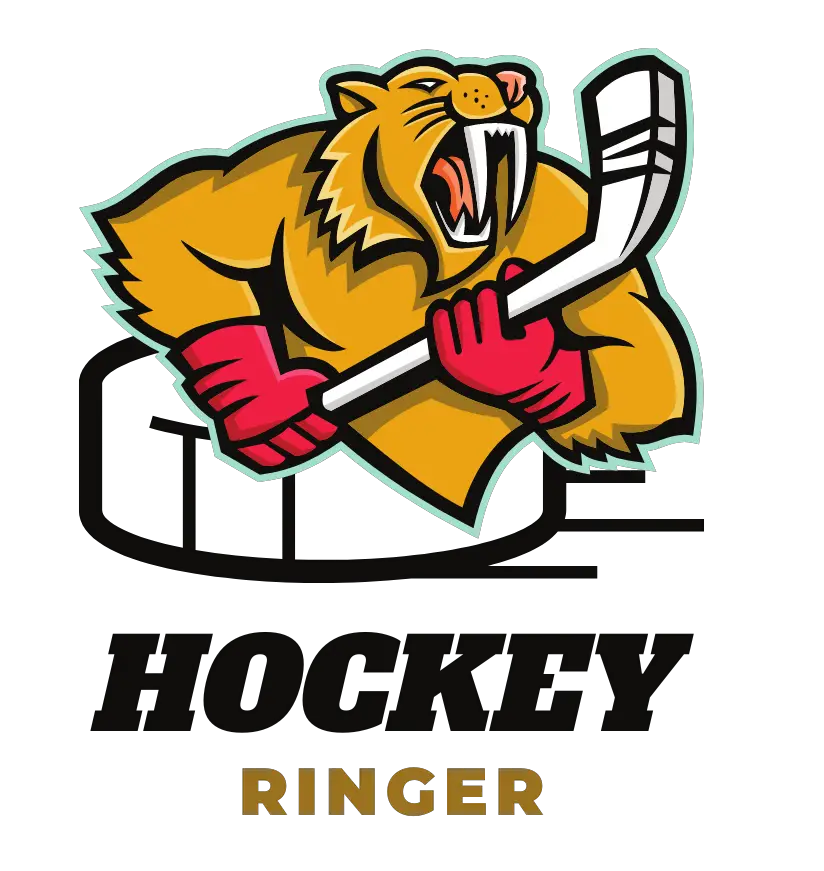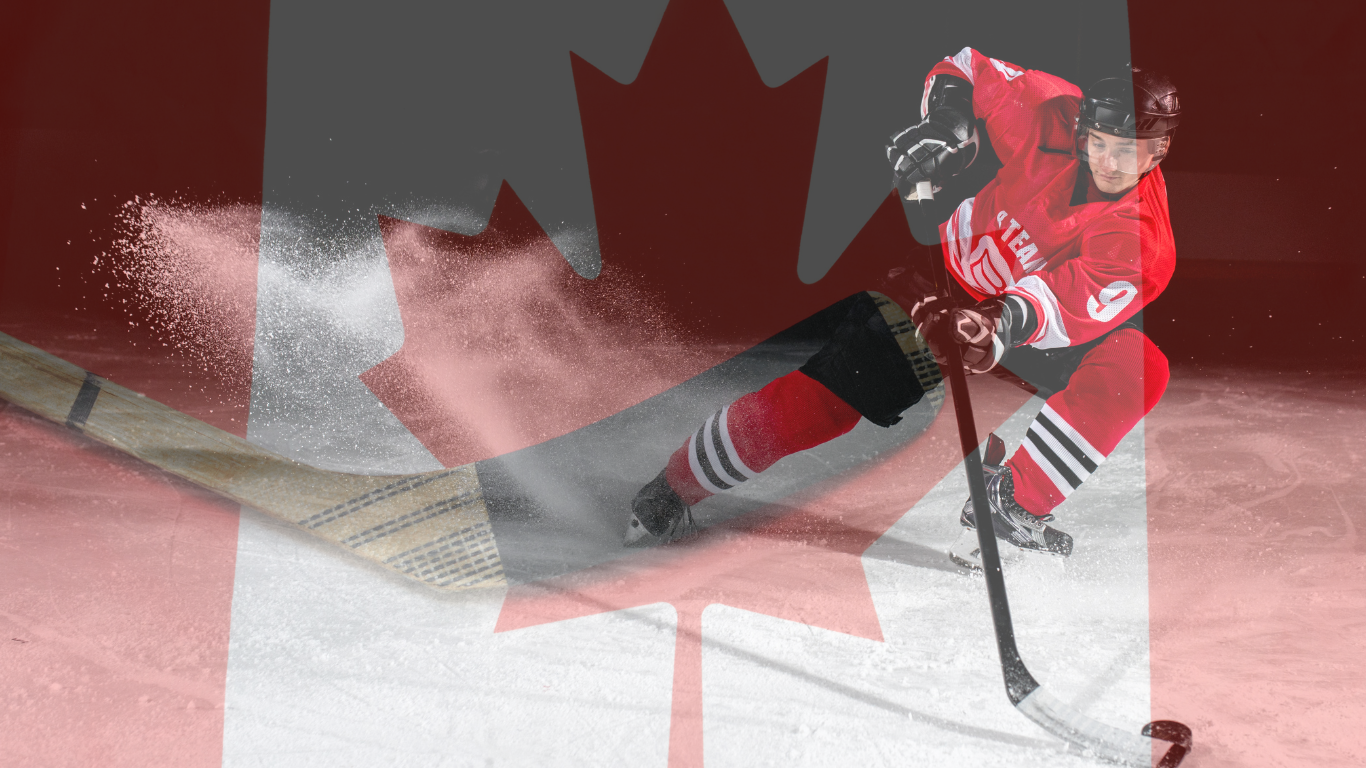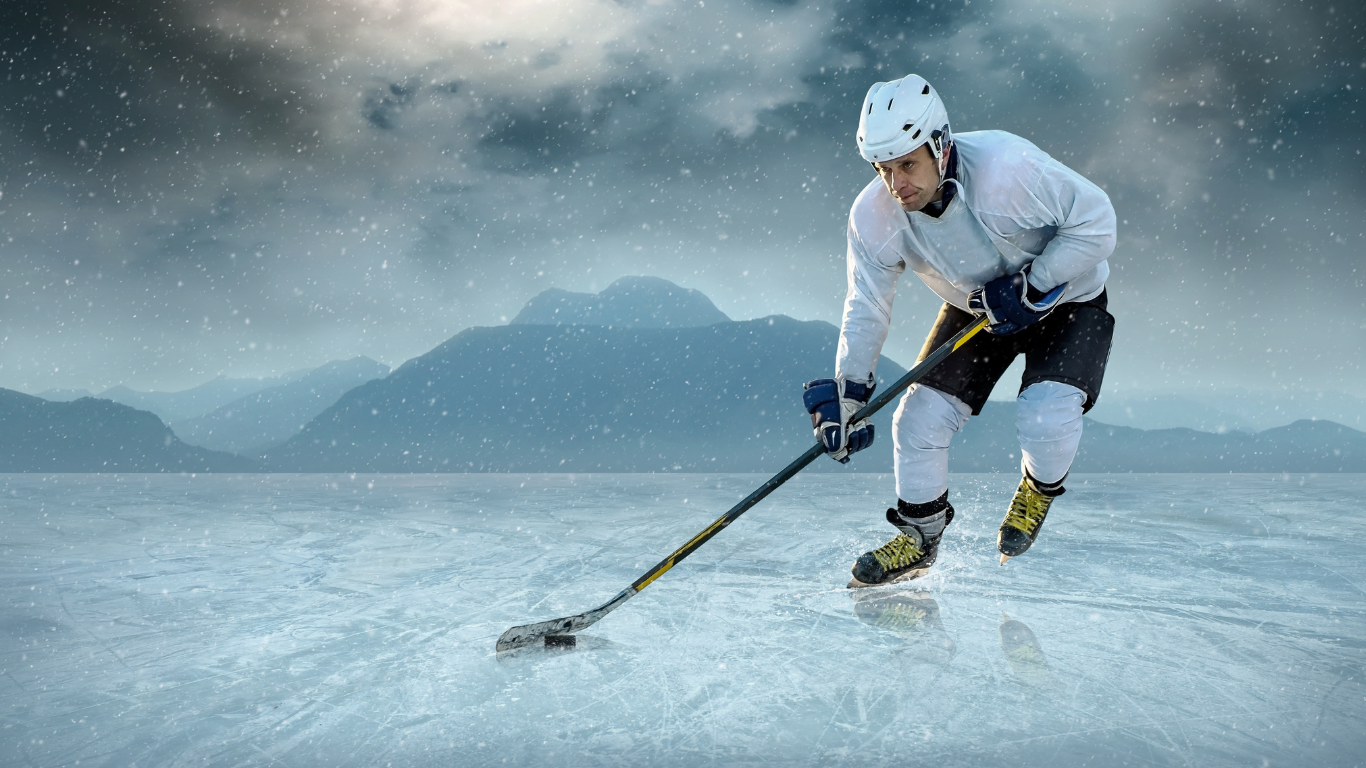A hockey line is a group of three forward players, a left-winger, a center, and a right-winger, who take shifts in a game.
While there are multiple positions to cover in this sport, only the forward groups are considered a line. Each team uses multiple groups of players on the line throughout the game, providing breaks and relief as time goes by.
Continue reading this article for more information on hockey lines, how many there are on each professional team, and other lines you will often hear about in hockey games.
What is a Hockey Line?
In hockey, each team is divided into three main groups. The forwards are tasked with taking control of the puck, moving it down the ice, and scoring a goal.
Behind the forward players, you have defensemen, who have the job of keeping the puck away from the goal and getting upfront to the forwards. Lastly, you have the goalie who guards the net against the opposing team.
The line is the group of players who take shifts as forwards. Due to the length of the game and the amount of energy used by the players, teams switch out their players to provide breaks during the game.
Each team has four forward lines, three pairs of defencemen, and two goalies. The forward line positions include a left-wing, a right-wing, and a center.
The Four Forward Lines
You probably noticed there are more groups of forwards than the other two positions. This is because the forwards are allowed to cover more space, using up more energy and requiring breaks more often.
Another important reason for having four forward lines is to provide the team with different skills and techniques throughout the game to counteract the opposing team and make it more difficult for them to score a goal.
First Line
The first line is almost always in the starting lineup and typically sees the most time on the ice. This line is made up of the team’s best offense, who are likely to score the majority of the points in any given game.
Second Line
The second line is often comprised of the second-tier, highly-skilled, offensive players. These are the players that will fill in the gaps when the first line needs to break. You will often see a team put “first line” material players on the second line to keep scores coming throughout the game.
High-end players may also find themselves on the second line if there are two highly-skilled team members that play the same position.
Third Line
The third line, also known as the checking line, is made up of players who are known for being more defensive in the game than goal scorers. These players are often much more physical than the first and second lines.
The third line is often played against the opposing team’s first or second line in order to wear them out, then replacing the first line to score more goals.
Fourth Line
The fourth line often referred to as the energy line, is played by strong skaters who provide more of a physical play than actually scoring goals.
These players are only rotated out in short bursts, not requiring them to pace themselves or end up losing stamina.
Many of the fourth-line players are the ones seen in face-offs and are made up of players used to intimidate, pester, and antagonize their opponents.
What is a Line Change?
A line change is exactly what it sounds like, a time during the game when the groups of players change. The line change doesn’t have to take place all at the exact same time.
For example, the center linemate can change places with another center, and the left and right-wing players can stay in place.
A full line change occurs when all three linemates are on the ice, whether first, second, third, or fourth line.
When do Line Changes Take Place?
In professional hockey games, players are only on the ice for 45-seconds at a time; this keeps players from wearing out.
Players can swap out mid-game when there is a stoppage or “on the fly,” which means while the game is still in play.
If players are trading out while the game is still in action, there are rules to when the swap can happen. The player coming off the ice needs to be near the bench and not involved in the game; if the switch isn’t timed perfectly.
When watching a hockey game, you are bound to notice all of the lines painted on the ice. Believe it or not, they each have significant meaning and are extremely important to the game.
So, what do each of these lines mean and how do they help during a hockey game? Let’s take a look.
Center Line
The centerline is directly in the middle of the ice, between both teams’ goals. This line is where each face-off of the period starts and the face-off after a goal. This is also the line that determines where a shot can be made from.
If a shot is made past the centerline, the referee can call an icing penalty.
Face-off Spots and Circles
There are face-off spots and circles used when the game is stopped and needs to get back into play. There are nine face-off spots altogether:
- two in both attacking zones
- two on both ends of the neutral zone
- one in the center of the rink.
There are five face-off circles with one neutral ice circle and four in-zone circles.
Goal Line
The goal line is used to determine whether or not the opposing team has scored a goal. If the player gets the puck past the goal line legally, the team scores a goal.
Goal Crease and Goal Keeper Restricted Area
The goal crease is the blue area directly in front of the goal; this is a space where the goalkeeper has the ability to move around the ice freely. While the other team can pass through the crease, they cannot interfere with the goalkeeper.
The goalkeeper’s restricted area is a trapezoid that runs along the sides of the goal. This is the only space where the goalkeeper can handle the puck.
Blue Lines
Blue lines are mainly used to determine whether or not players are off-sides. These lines determine the attack zone from the neutral zone. These lines indicate the offensive zones where teams cannot cross without getting penalized.
What is the Last Line Change?
In hockey, the home team is given the advantage of choosing their line last. The last line change takes place at the end of the game after the visiting team sends their players onto the ice. This is done to give the home team the chance to choose the best line to pair up against the opposing players.
Summing Things Up
There are so many lines in hockey, with the term being used in many different areas of the game. However, when the term hockey line is used, it is referring to one of the four groups of offense men playing at the time.




